Among the nine major Flagship Projects (FPs) funded by Europe’s Rail Joint Undertaking (EU-Rail), FP2-R2DATO plays a...
AFFI Event_Presentation_Simulation Automatic Train Operation (ATO) – Grade of Automation 2 (GoA)
Output type:
Europe’s Rail Joint Undertaking (ERJU), Rail to Digital up to ATO (R2DATO) aims to demonstrate the contribution of specific technologies to innovation in rail signalling systems. The ‘modelling techniques’ working group aims to demonstrate the contribution of these approaches in ATO (Automatic Train Operation) use cases.
Although widely deployed in urban networks, train automation according to the European ATO standard remains underdeveloped in the context of heavy trains, despite ongoing projects, encouraged by its inclusion in the technical specifications of the European train control system. Modelling and simulation tools play a key role not only in verifying the consistency and completeness of the standards, but also in obtaining a vision of the system that is shared by all the players involved.
In the context of train automation, these tools are also useful for estimating the gains made by the ATO system, which are only partially assessed at present.
Various modelling techniques are presented as part of this work: control command algorithms, co-simulation, 3D environment modelling, development security and artificial intelligence.
Another objective of this work is to quantify the energy savings achievable with a GoA2 ATO using a model-based approach, in line with European standards. A simulator has been developed using Matlab/Simulink and includes an ATO model inspired by the scientific literature. The ATO generates an energy-optimal speed profile extracted from a graph representing a set of profiles with travel time and energy consumption parameters. The optimal profile is tracked using a predictive controller (MPC). The train’s automatic driving performance was then compared with that of manual driving in the field, including with the assistance of a DAS.
This simulator was used to estimate an energy saving thanks to ATO compared with manual driving.
















